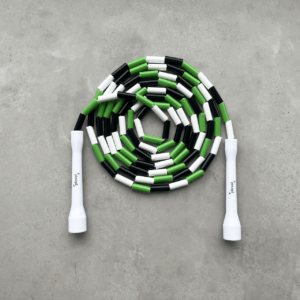Beaded rope, a traditional form of handcrafted jewelry, has transcended generations and cultures, evolving into a captivating art form that combines intricate design with a touch of personal expression. In this article, we explore the world of beaded rope, delving into its history, techniques, and the boundless creativity it offers to artisans and enthusiasts alike.
A Rich History:
The history of beaded rope dates back centuries, with evidence of its existence found in various ancient civilizations. Beads, often crafted from materials such as wood, bone, or clay, were meticulously strung together to create ropes, necklaces, and decorative accessories. These early examples of beadwork not only served as adornments but also held cultural and symbolic significance within communities.
Techniques and Variations:
Beaded rope creation involves a set of techniques that require skill, patience, and precision:
Peyote Stitch: This technique involves weaving beads in a brick-like pattern, creating a flexible and supple rope. Peyote stitch allows for intricate designs and color combinations.
Spiral Rope: In spiral rope beading, beads are woven in a helical pattern, resulting in a rope with a coiled appearance. This technique offers a unique and visually striking effect.
Herringbone Stitch: Beaders use the herringbone stitch to create a rope with a V-shaped pattern. It is known for its flexibility and the ability to incorporate various bead sizes.
Right-Angle Weave: This technique involves weaving beads at right angles to create a structured, sturdy rope with a rectangular pattern.
Loom Beading: Loom beading utilizes a bead loom to create intricate patterns and designs. It is a versatile method for creating both flat and tubular beadwork.
Endless Creativity:
The beauty of beaded rope lies in its infinite possibilities for creativity:
Colors: Beaders can choose from a vast palette of bead colors, allowing for the creation of visually stunning pieces that reflect personal style and preferences.
Patterns: Patterns can range from traditional and geometric to abstract and freeform. Artists often incorporate symbols and motifs that hold personal or cultural meaning.
Materials: Beaded ropes can be crafted with a wide array of materials, including glass beads, gemstones, crystals, and even unconventional materials like paper or recycled items.
Functionality: Beaded ropes are not limited to jewelry; they can be incorporated into clothing, accessories, home decor, and even used as embellishments for other crafts.
Modern Revival:
In recent years, there has been a resurgence of interest in beaded rope as artisans explore contemporary interpretations and innovative techniques. Workshops, online communities, and bead shows provide platforms for enthusiasts to exchange ideas, learn new skills, and showcase their creations.
Beaded rope stands as a testament to the enduring allure of handmade craftsmanship. Its rich history, diverse techniques, and limitless creative potential continue to captivate artisans and enthusiasts worldwide. Whether you’re a seasoned beadworker or a novice exploring this art form, beaded rope offers a journey of self-expression and artistic exploration, bridging the past with the present in a colorful tapestry of beads and imagination.





